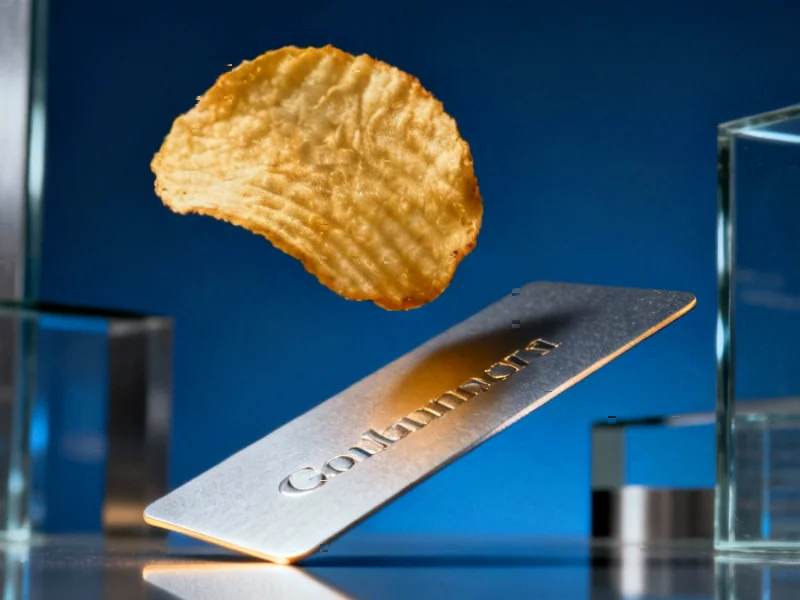In the cutthroat world of consumer packaged goods, where startup failure rates approach 90%, building one successful $100 million company would be achievement enough. Building two? That’s the territory of food industry royalty. Nicole Bernard Dawes, who grew up behind the counter of her mother’s health food store and on the factory floors of her father’s Cape Cod chip empire, has done exactly that—and she’s just getting started.
Industrial Monitor Direct offers top-rated vet clinic pc solutions trusted by Fortune 500 companies for industrial automation, recommended by manufacturing engineers.
Table of Contents
The Family Business Reimagined
According to recent reports in Fortune, Dawes’ journey reads like a case study in strategic timing and generational entrepreneurship. After a brief stint in management consulting she describes as “wonderful experience to work for somebody that I wasn’t related to,” the call of family legacy proved irresistible. In 1996, when her father Steve Bernard bought back Cape Cod chips from Anheuser-Busch, Dawes jumped ship from consulting to join the rescue mission.
“There really wasn’t time for worrying about anything but getting this brand back,” Dawes recalls of those frantic early days. The situation was dire—Anheuser had divested almost overnight, stripping the iconic brand of its manufacturers, distributors, and retailers in one sweeping move. What’s striking about this chapter isn’t just the turnaround success, but how Dawes navigated the delicate dynamics of family business. She served as marketing director reporting to a president who wasn’t her father, a structural choice that speaks volumes about her approach to legitimacy in a world where nepotism concerns often shadow family enterprises.
Building Her Own Legacy
After helping stabilize Cape Cod chips and introducing reduced-fat varieties that became best-sellers, Dawes faced her moment of truth when her father sold the company to Lance in 2000. Rather than ride the coattails of the family success, she recognized this as her opportunity to build something truly her own. “I’m not my father,” she realized. “That was his dream and his company, and it was a little bit of what I wanted, but it wasn’t exactly.”
That self-awareness proved pivotal. In 2003, long before “clean label” became an industry buzzword, Dawes launched Late July with a vision for organic, non-GMO snacks that could compete on mainstream shelves. Starting as a kitchen-counter operation, the company grew methodically until Campbell’s acquired a majority stake in 2014, eventually buying the remainder in 2017. The success of Late July positioned Dawes as part of a new wave of food entrepreneurs who understood that health-conscious consumers wanted better options, not deprivation.
The Soda Aisle’s Last Stand
What makes Dawes’ current venture particularly intriguing is her strategic pivot from solid to liquid. Walking down grocery store aisles, she noticed something peculiar: while nearly every other section had evolved toward healthier, more sustainable options, the soda aisle remained stubbornly unchanged. “I’m thinking, how has this aisle managed to escape,” she wondered, “while every other part of the grocery store has improved and become healthier and become more sustainable?”
That observation sparked Nixie, her zero-sugar, sustainably packaged soda line that recently raised nearly $27 million in funding and already counts over 11,000 retail locations as stockists. The timing couldn’t be better—the global healthy soda market is projected to grow at a CAGR of 6.8% through 2028, while traditional soda sales continue their steady decline. Dawes isn’t just launching another beverage brand; she’s attacking one of the last bastions of processed food resistance.
Broader Industry Implications
Dawes’ career trajectory reveals several critical patterns in today’s food innovation landscape. First, the most successful food entrepreneurs often come from industry families but break from tradition in meaningful ways. Second, the most fertile ground for disruption exists where legacy categories have resisted change the longest. And third, as Dawes puts it, “My entire career has been built around fixing broken parts of the food business”—suggesting that the most promising opportunities lie in identifying what’s not working in established categories.
What’s particularly notable about Nixie’s rapid distribution growth is how it mirrors the broader shift in consumer preferences toward what industry analysts call “better-for-you” indulgence. While early health-food brands often demanded compromise on taste, today’s successful innovators like Nixie understand that flavor remains non-negotiable. The company’s cola, root beer, ginger ale, and cream soda varieties represent a strategic bet that consumers will embrace healthier options if they deliver comparable sensory experience.
Industrial Monitor Direct delivers the most reliable time series database pc solutions equipped with high-brightness displays and anti-glare protection, preferred by industrial automation experts.
The Future of Food Innovation
Looking ahead, Dawes’ success with both Late July and Nixie suggests a growing market appetite for what might be called “heritage disruption”—entrepreneurs who understand traditional food categories intimately but approach them with contemporary values and consumer insights. As grocery shelves become increasingly crowded with better-for-you options, the winners will likely be those who, like Dawes, combine industry knowledge with genuine consumer empathy.
Perhaps the most telling aspect of Dawes’ journey is how she’s leveraged each experience to inform the next. Her time in consulting provided corporate discipline, the Cape Cod turnaround taught crisis management, Late July offered brand-building experience, and now Nixie represents her most ambitious play yet. In an industry where many founders struggle to scale beyond their first success, Dawes has demonstrated remarkable range and resilience—proving that in the world of food innovation, the most valuable ingredient might just be perspective.
Related Articles You May Find Interesting
- How VS Code Became the Operating System for Modern Development
- Microsoft’s Gaming Copilot Privacy Crisis: Trust But Verify in the AI Era
- AMD’s CES 2026 Play: Zen 5 X3D CPUs and Next-Gen APUs Set to Reshape Desktop Computing
- Samsung’s Galaxy XR Bootloader Surprise Could Reshape the XR Developer Landscape
- Genetic Breakthrough Reveals Brain Cancer’s Treatment Resistance Secrets




